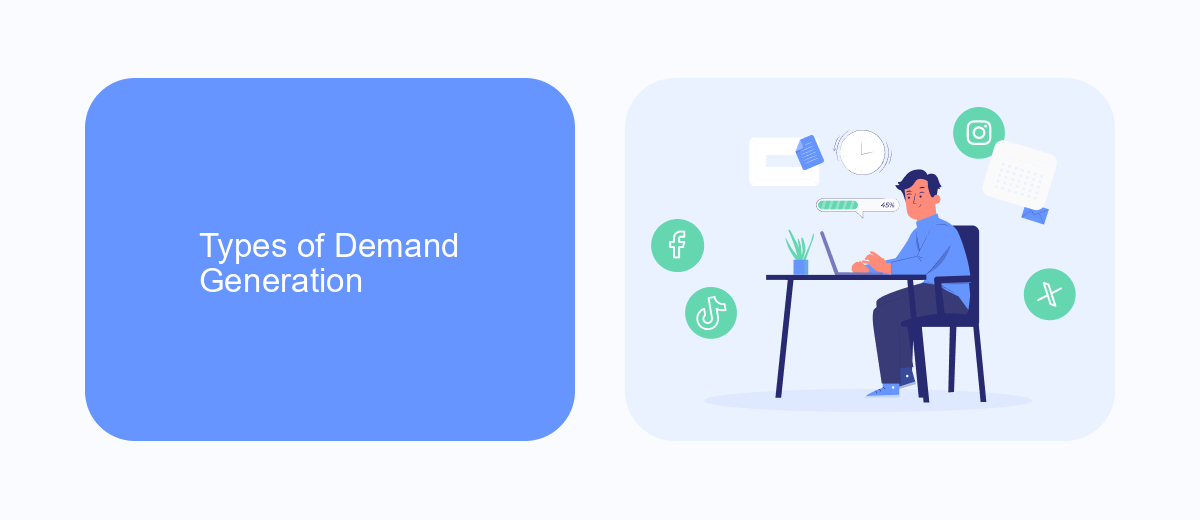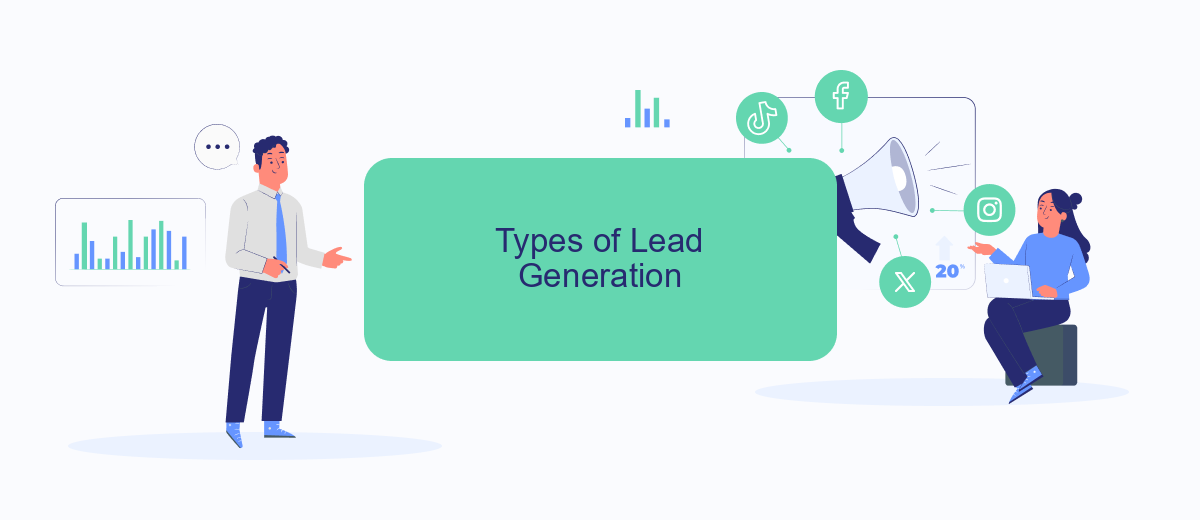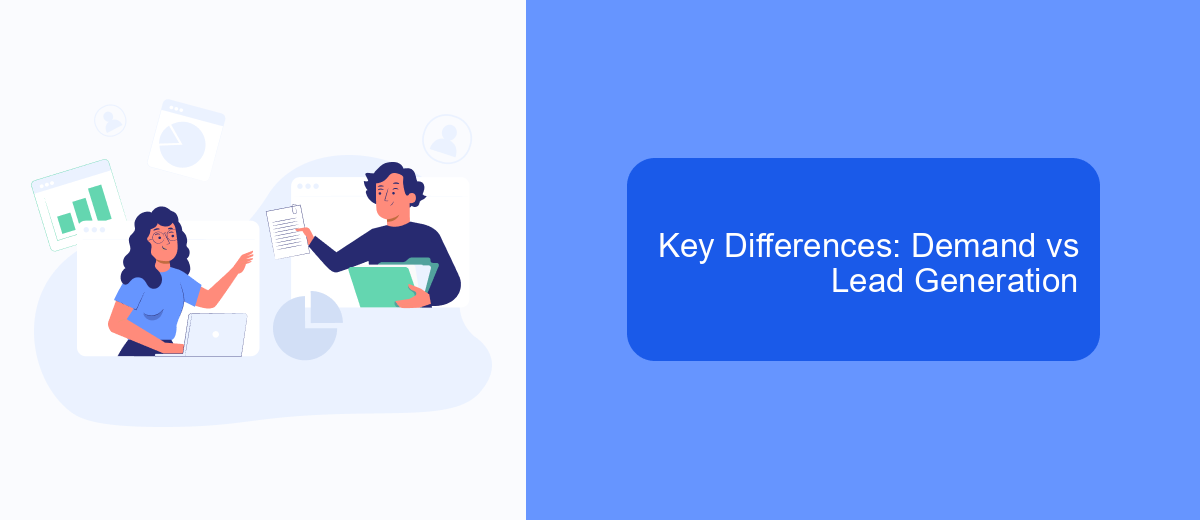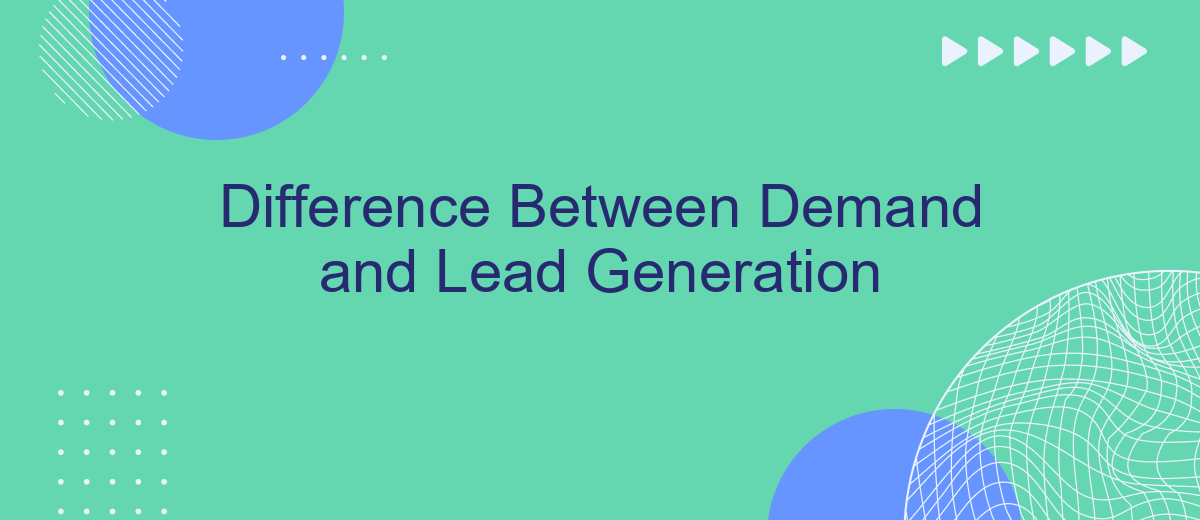Understanding the difference between demand generation and lead generation is crucial for any business aiming to optimize its marketing strategy. While both concepts aim to attract potential customers, they serve distinct purposes and require different approaches. This article will explore the key differences between demand generation and lead generation, helping you to effectively implement each strategy for maximum impact.
Difference Between Demand and Lead Generation
Demand generation and lead generation are crucial components of a successful marketing strategy, but they serve different purposes. Demand generation focuses on creating awareness and interest in your product or service, often through broad-reaching campaigns that educate and inform potential customers. Lead generation, on the other hand, is more targeted and aims to capture contact information from interested prospects, converting them into leads that can be nurtured through the sales funnel.
- Demand Generation: Builds brand awareness and interest.
- Lead Generation: Converts interested prospects into leads.
- Demand Generation: Utilizes content marketing, social media, and PR.
- Lead Generation: Employs forms, gated content, and email campaigns.
While demand generation sets the stage by attracting a broad audience, lead generation narrows it down to those who are genuinely interested. Integrating these strategies can be streamlined with tools like SaveMyLeads, which automates the process of capturing and managing leads, ensuring a seamless transition from generating interest to fostering meaningful customer relationships.
Types of Demand Generation

Demand generation encompasses various strategies aimed at creating awareness and interest in a company's products or services. One common type is content marketing, which involves creating valuable and relevant content to attract and engage potential customers. This can include blog posts, whitepapers, eBooks, and videos that address the pain points and needs of the target audience. Another effective method is social media marketing, which leverages platforms like Facebook, LinkedIn, and Twitter to reach a broader audience, foster community engagement, and drive traffic to the company's website.
Email marketing is also a crucial component of demand generation, as it allows businesses to nurture leads by sending personalized and targeted messages. Additionally, webinars and virtual events provide an interactive way to showcase expertise and build relationships with potential customers. Integrating these strategies with automation tools like SaveMyLeads can streamline the process, ensuring that leads are efficiently captured and managed. SaveMyLeads offers seamless integration with various platforms, enabling businesses to automate lead generation workflows and focus on converting prospects into loyal customers.
Types of Lead Generation

Lead generation is a crucial component of any successful marketing strategy, as it helps businesses identify potential customers and convert them into sales. There are various methods to generate leads, each with its own unique advantages and applications. Here are some of the most effective types of lead generation:
- Content Marketing: Creating valuable content such as blogs, eBooks, and webinars to attract and engage potential customers.
- Email Marketing: Sending targeted email campaigns to nurture relationships and encourage prospects to take action.
- Social Media Marketing: Leveraging platforms like Facebook, LinkedIn, and Instagram to reach a wider audience and generate interest in your products or services.
- SEO and PPC: Optimizing your website for search engines and using pay-per-click advertising to drive traffic and capture leads.
- Webinars and Events: Hosting online or in-person events to provide valuable insights and connect with potential customers.
To streamline the lead generation process, businesses can use integration services like SaveMyLeads. This platform automates the transfer of leads from various sources into a CRM system, ensuring that no potential customer is overlooked. By leveraging these types of lead generation methods and tools, companies can effectively grow their customer base and increase revenue.
Key Differences: Demand vs Lead Generation

Demand generation and lead generation are two essential components of a successful marketing strategy, but they serve different purposes. Demand generation focuses on creating awareness and interest in your products or services, whereas lead generation aims to capture details of potential customers who have shown interest.
One of the key differences lies in their objectives. Demand generation seeks to educate and engage a broad audience, often through content marketing, social media, and webinars. In contrast, lead generation targets individuals who are already interested, using methods like landing pages, forms, and gated content to collect their information.
- Demand generation builds brand awareness and interest.
- Lead generation captures contact details of interested prospects.
- Demand generation uses broad-reaching tactics like webinars and social media.
- Lead generation employs targeted methods like forms and landing pages.
Both strategies are crucial for a comprehensive marketing approach. Tools like SaveMyLeads can streamline the integration of these efforts by automating the process of capturing and managing leads, ensuring a seamless transition from interest to engagement.


Marketing Funnel Considerations
When considering the marketing funnel, it's essential to understand where demand generation and lead generation fit. Demand generation focuses on creating awareness and interest at the top of the funnel. This stage is all about educating potential customers and building brand recognition. Effective demand generation strategies often include content marketing, social media engagement, and broad-reaching advertising campaigns.
Lead generation, on the other hand, targets the middle and bottom of the funnel. Here, the goal is to capture interested prospects and convert them into leads. This involves more direct tactics like email marketing, gated content, and webinars. To streamline the process, integrating tools like SaveMyLeads can be invaluable. SaveMyLeads automates the lead capture process, ensuring that potential customers are efficiently moved through the funnel, from initial interest to final conversion. By leveraging such tools, businesses can optimize their marketing efforts and improve overall conversion rates.
FAQ
What is the primary difference between demand generation and lead generation?
Can demand generation and lead generation work together?
What are some common tactics used in demand generation?
How can marketing automation tools help in lead generation?
What is the role of SaveMyLeads in lead generation?
Personalized responses to new clients from Facebook/Instagram. Receiving data on new orders in real time. Prompt delivery of information to all employees who are involved in lead processing. All this can be done automatically. With the SaveMyLeads service, you will be able to easily create integrations for Facebook Lead Ads and implement automation. Set up the integration once and let it do the chores every day.
